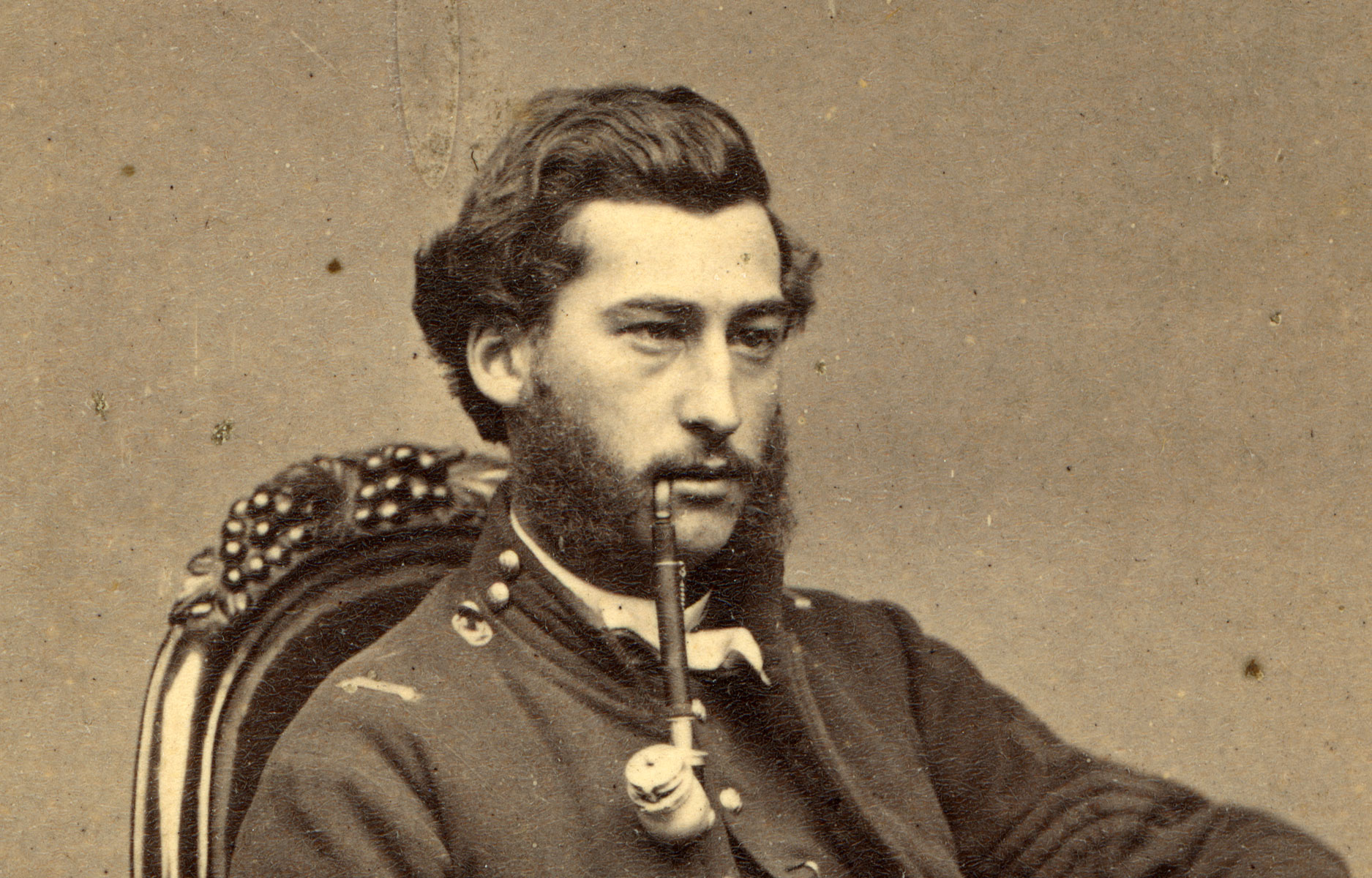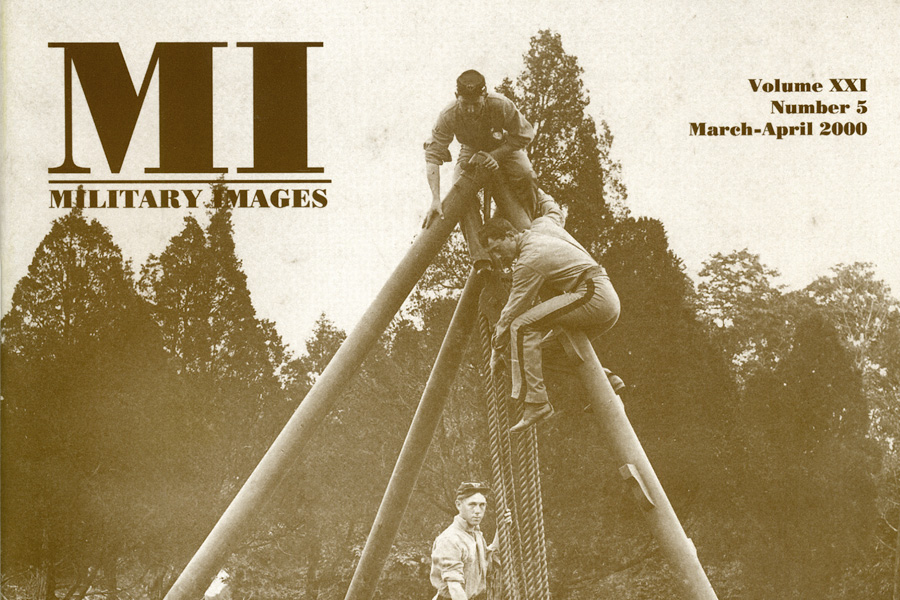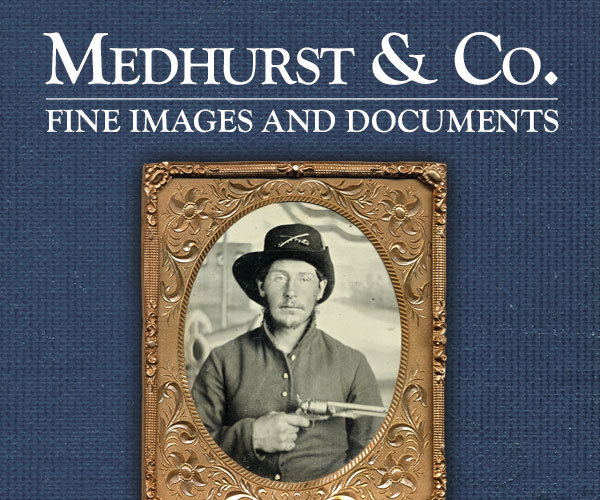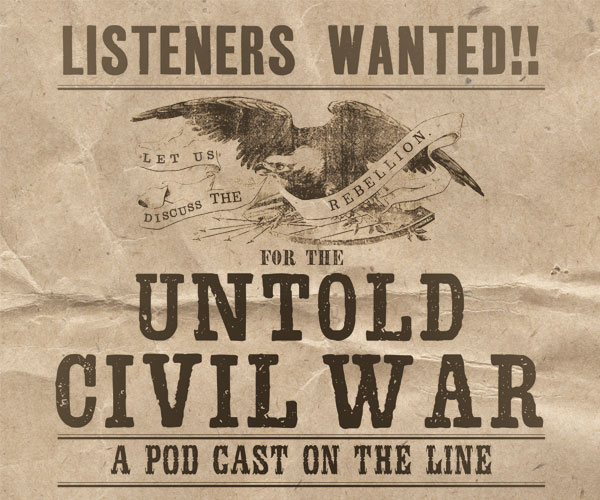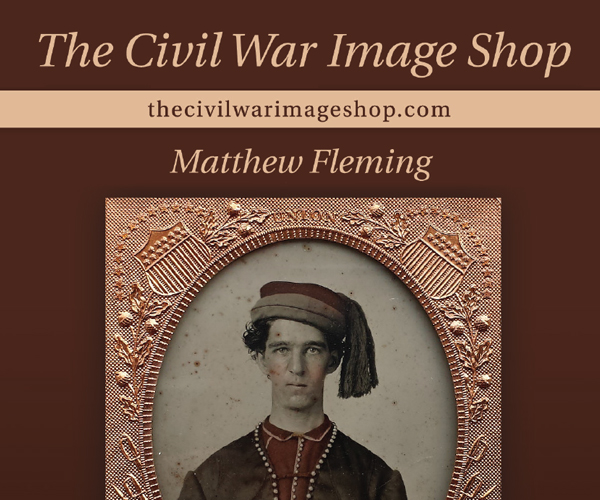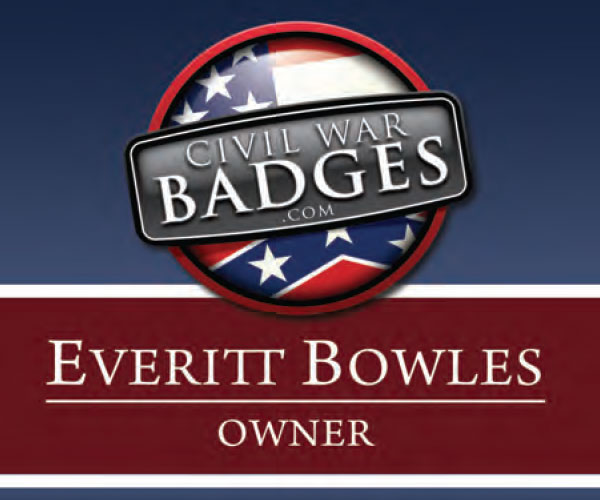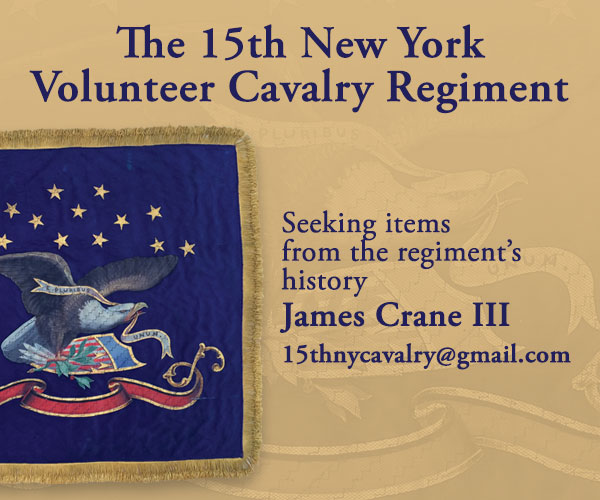The complete issue
Vol. XXI, No. 5
(48 pages)
Print edition: Visit our store to check availability
Digital edition: Visit JSTOR.org to purchase
Subscribe to MI
Explore the MI Archives: Browse | Advanced search | Tutorial
Inside
Cover image
A large format albumen print courtesy Jack Reeves pictures West Point cadets confronting an engineering challenge circa 1890-1910.
Editor’s Desk (p. 3)
The editor introduces the long-awaited New York issue and thanks Guest Editor Bob Mulligan for his outstanding efforts, and mentions an upcoming exhibit on Maine in the Civil War, a new website for Indiana soldiers and symposia about women in the Civil War.
Mail Call (pp. 4-5)
Letters about the identity of the soldier on the cover of the last issue dominate. The general consensus is that the man is not John Singleton Mosby.
New York and the War of the Rebellion by Robert Mulligan (pp. 6-8)
The author, in his role as Guest Editor, provides background and context around the Empire State in this introduction. The text is illustrated with portraits of Pvt. Henry N. Francis of the 21st New York Infantry, and a group of post-war veterans at a reunion.
The Union Continentals by Ben Maryniak (pp. 9-11)
A home guard composed of retired military officers, the Union Continentals were led by former President Millard Fillmore. His likeness, in uniform, as well as images of Chaplain John C. Lord and three other men, accompany the historical sketch.
Uniforms & History by Michael J. McAfee (pp. 12-13)
In “The New York State Jacket, 1861,” McAfee examines the uniform and its distinctive jacket with cloth shoulder straps. A dozen soldier portraits show variations in the design.
How I Spent My Summer Vacation, or “Murdered in Texas Since the War” by Scott Valentine (pp. 16-18)
The author takes readers on the photo sleuthing journey prompted by the acquisition of a carte de visite of Lt. George Washington Smith of the 123rd New York Infantry—an image that he at first was not especially interested in. The image illustrates the text.
“Mary…You Will Find an Ambrotype” The Letters of Justus Grant Matteson and Mary Hatch edited by Paul S. Johnson (pp. 18-19)
A tintype of Matteson illustrates the text of this story, which provides details of his life and military service in the 10th New York Cavalry.
A German Regiment in the Civil War: The 45th New York State Volunteer Infantry “5th German Rifles” by William J. Halpin (pp. 20-23)
This regimental history is illustrated with 11 portraits, including Lt. Col. Augustus Dobke, Lt. Augustus Basson, Lt. Henry Wexel, Capt. William Dross, Lt. Herman Roeke, Capt. Herman Weller, Sgt. Eml Burchard, Pvt. Peter Lander, Capt. William Syring, Lt. Felix Metzinger and Pvt. Anton Jesbera.
The Ninth’s New Colonel: A humorous tale of Old New York by Robert E. Mulligan Jr. (pp. 24-26)
Reprinted from the March/April 1983 issue. The tale of how the 9th Regiment of Infantry, National Guard, State of New York avoided disbandment in 1870 involves individuals of power and position, and with connections to Tammany Hall. “Jubilee Jim” Fisk was well-known to New Yorkers and despite his total lack of military ability, he was elected as the colonel of the unit. He was able to use his deep pockets to ensure the continuation of the 9th. The article recounts the events of July 12, 1871: the anniversary of the Battle of the Boyne, which set the Irish and their rival Orangemen against one another. As the Orangemen marched, a number of regiments were ordered to provide them protection, including the 9th. Colonel Jim ended up injured and disguised to escape as gunfire between the marchers, regiments, and the crowd rang out, while four guardsmen, 41 citizens, and no Orangemen lay dead.
Captain White’s Saber by Robert E. Mulligan Jr. (pp. 26-28)
The author begins the story of Patrick White, an officer in the Chicago Mercantile Battery, by describing his sword, a beat-up relic located at the bottom of a shelf in the New York State Museum’s storage area. “On shelves above this sorry sword glitter half a dozen fancy presentation blades. But of all the swords in the collection, this one is the best.” He then explains why. The sword and two wartime portraits of White illustrate the text.
“God Be Merciful” Letters of Arthur O’Keeffe 34th New York Infantry, 1861-1862 by Elizabeth O’Keeffe Fiore (pp. 29-30)
Quotes from letters tell the story of the life of this soldier, whose service was cut short when he was mortally wounded at the Battle of Antietam. His body was never recovered.
Her Name Was “Della” Graves by D.L. Odom (pp. 31-32)
Sarah Adele “Della” Graves, suffered many losses in her life—several children and a brother during the Civil War. The war also caused another brother to be disabled and a brother-in-law to be captured by Confederates. The author tells their stories, which are illustrated with portraits of Della, her husband, Sgt. Edwin Graves of the 110th New York Infantry, Edwin’s comrade, Henry Monroe Hammond, and an unknown corporal who may be Della’s brother Edmund Wilson of the 24th New York Infantry.
The Rise and Fall of “Boss” Hogg 2nd New York Heavy Artillery by Michael Thaler (pp. 33-35)
George Hogg, notes the author in the introduction to this story, “managed to pack a prodigious amount of mischief into his four-year military career.” What follows is an accounting of various infractions that marred his record. Still, his troubles did not prevent him from becoming the regiment’s lieutenant colonel. His tintype illustrates the text.
New York’s Bureau of Military Statistics by Daniel Lorello (pp. 36-39)
The author, a senior archivist at the New York State Archives, provides an accounting of the bureau and the work it performed during the war. Key to the organization is Lockwood Lyon Doty, the bureau’s first chief. His portrait, and an outdoor image believes to be the Troy Citizens Corps, illustrate the text.
The Separate Companies of the National Guard, State of New York, 1863-1903 by Anthony Gero (pp. 40-44)
This short history includes an account of its militia roots from 1803 to 1863, at which time the National Guard was established. The uniforms of the Guard changed as the state and the rest of the nation advanced through the latter half of the 19th century. Some of the changes are documented in photographs from the author’s collection, which include 10 examples published here. An additional photo, a group of veterans at the dedication of the monument to “Cowan’s Battery,” 1st Independent Battery, at Gettysburg’s Bloody Angle on July 3, 1887, rounds out the narrative.
Sutler’s Row (pp. 45-48)
Back cover
A quarter-plate tintype from the Michael Donahue Collection pictures Sgt. Edwin T. Marsh of the 140th New York Infantry at Warrenton, Va., in December 1863.
